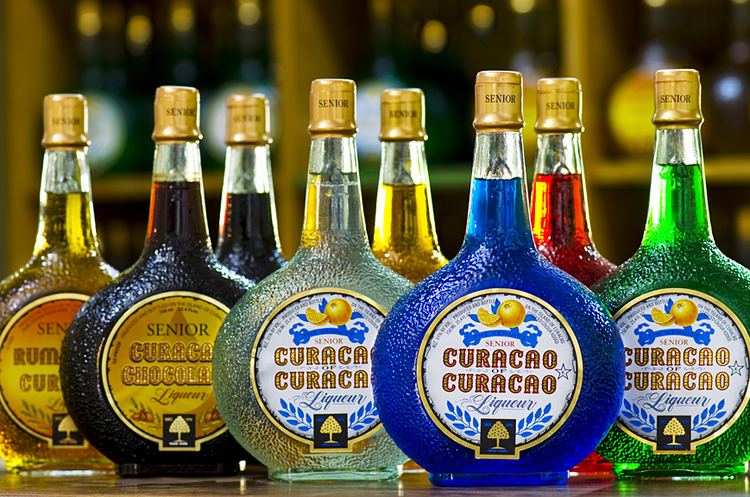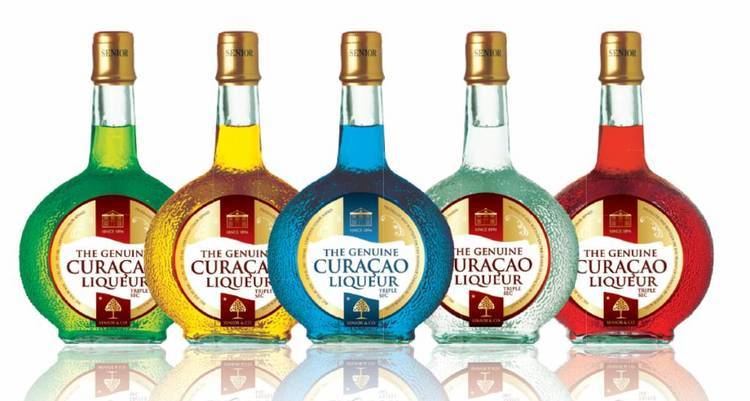Alcohol by volume 15–40% | Manufacturer (various) Introduced 19th century | |
Color Colorless, but often artificially colored blue Similar Triple sec, Grenadine, Blue Lagoon, Liqueur, Blue Hawaii | ||
Curaçao (/ˈkjʊərəsaʊ/ KYUR-uh-sao) is a liqueur flavored with the dried peel of the laraha citrus fruit, grown on the island of Curaçao.
Contents
History
A non-native plant similar to an orange, the laraha developed from the sweet Valencia orange transplanted by Spanish explorers in 1527. The nutrient-poor soil and arid climate of Curaçao proved unsuitable to Valencia cultivation, resulting in small, bitter fruit of the trees. Although the bitter flesh of the laraha is hardly edible, the peels are aromatic and flavorful, maintaining much of the essence of the Valencia orange.

At least two conflicting explanations of the origin of Blue Curaçao exist. The Lucas Bols distillery, founded in 1575 in Amsterdam, maintains that Lucas Bols (1652–1719) already developed a laraha-based liqueur. The Dutch West Indies Company had taken possession of Curaçao in 1634 and Bols had shares in both the West and East India Companies to guarantee the cheap supply of spices for their distilled drinks. After the discovery that an aromatic oil could be extracted from the unripe peel of the otherwise useless bitter oranges, Bols had this oil exported back to Amsterdam to develop a liqueur similar to current day Curaçao. Bols tended to add an "element of alchemical mystery" to his products, explaining the unlikely addition of a blue coloring. In the past the liqueur also had the name Crème de Ciel ("cream of heaven"), presumably for its blue color.
Alternatively, the Senior Company of Curaçao maintains that the Jewish Senior family came across an original recipe for the drink in 1896 and started production. In 1947 they bought the Landhuis (Dutch for "country manor") Chobolobo in Willemstad, where the distillery has since been housed. As this company is the only one who uses lahara fruit from Curaçao, it has been permitted to put the word "genuine" on its labels.
Preparation

To create the liqueur the laraha peel is dried, bringing out the sweetly fragranced oils. After soaking in a still with alcohol and water for several days, the peel is removed and other spices are added. The liqueur has an orange-like flavor with varying degrees of bitterness. It is naturally colorless, but is often given artificial coloring, most commonly blue or orange, which confers an exotic appearance to cocktails and other mixed drinks. Blue color is achieved by adding a food colorant, most often E133 Brilliant Blue.

Some other liqueurs are also sold as Curaçaos with different flavors added, such as coffee, chocolate, and rum and raisin.
